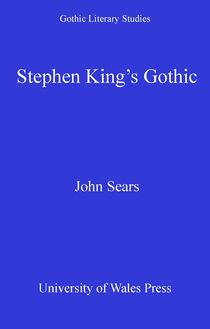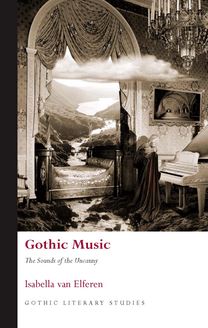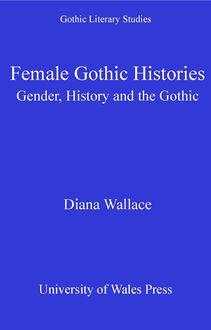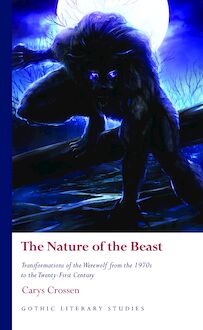-
 Univers
Univers
-
 Ebooks
Ebooks
-
 Livres audio
Livres audio
-
 Presse
Presse
-
 Podcasts
Podcasts
-
 BD
BD
-
 Documents
Documents
-
- Cours
- Révisions
- Ressources pédagogiques
- Sciences de l’éducation
- Manuels scolaires
- Langues
- Travaux de classe
- Annales de BEP
- Etudes supérieures
- Maternelle et primaire
- Fiches de lecture
- Orientation scolaire
- Méthodologie
- Corrigés de devoir
- Annales d’examens et concours
- Annales du bac
- Annales du brevet
- Rapports de stage
La lecture à portée de main
Vous pourrez modifier la taille du texte de cet ouvrage
Découvre YouScribe en t'inscrivant gratuitement
Je m'inscrisDécouvre YouScribe en t'inscrivant gratuitement
Je m'inscrisEn savoir plus
Vous pourrez modifier la taille du texte de cet ouvrage
En savoir plus

Description
Sujets
Informations
| Publié par | University of Wales Press |
| Date de parution | 15 mars 2012 |
| Nombre de lectures | 0 |
| EAN13 | 9781783164998 |
| Langue | English |
Informations légales : prix de location à la page 0,1250€. Cette information est donnée uniquement à titre indicatif conformément à la législation en vigueur.
Extrait
QUEER OTHERS IN VICTORIAN GOTHIC
SERIES PREFACE
Gothic Literary Studies is dedicated to publishing groundbreaking scholarship on Gothic in literature and film. The Gothic, which has been subjected to a variety of critical and theoretical approaches, is a form which plays an important role in our understanding of literary, intellectual and cultural histories. The series seeks to promote challenging and innovative approaches to Gothic which question any aspect of the Gothic tradition or perceived critical orthodoxy. Volumes in the series explore how issues such as gender, religion, nation and sexuality have shaped our view of the Gothic tradition. Both academically rigorous and informed by the latest developments in critical theory, the series provides an important focus for scholastic developments in Gothic studies, literary studies, cultural studies and critical theory. The series will be of interest to students of all levels and to scholars and teachers of the Gothic and literary and cultural histories.
SERIES EDITORS
Andrew Smith, University of Glamorgan
Benjamin F. Fisher, University of Mississippi
EDITORIAL BOARD
Kent Ljungquist, Worcester Polytechnic Institute Massachusetts
Richard Fusco, St Joseph s University, Philadelphia
David Punter, University of Bristol
Chris Baldick, University of London
Angela Wright, University of Sheffield
Jerrold E. Hogle, University of Arizona
Queer Others in Victorian Gothic
Transgressing Monstrosity
Ardel Haefele-Thomas
Ardel Haefele-Thomas, 2012
All rights reserved. No part of this book may be reproduced in any material form (including photocopying or storing it in any medium by electronic means and whether or not transiently or incidentally to some other use of this publication) without the written permission of the copyright owner. Applications for the copyright owner s written permission to reproduce any part of this publication should be addressed to the University of Wales Press, 10 Columbus Walk, Brigantine Place, Cardiff CF10 4UP.
www.uwp.co.uk
British Library CIP Data
A catalogue record for this book is available from the British Library.
ISBN 978-0-7083-2464-6 (hardback) 978-0-7083-2465-3 (paperback)
e-ISBN 978-1-78316-499-8
The right of Ardel Haefele-Thomas to be identified as author of this work has been asserted in accordance with sections 77 and 79 of the Copyright, Designs and Patents Act 1988.
Dante Gabriel Rossetti, cover illustration for Christina Rossetti s poetry collection Goblin Market (1862); Pictorial Press Ltd/Alamy.
for Lisa and Jalen
C ONTENTS
Acknowledgements
1 Introduction
2 The Spinster and the Hijra : How Queers Save Heterosexual Marriage in Wilkie Collins s The Woman in White and The Moonstone
3 Escaping Heteronormativity: Queer Family Structures in Elizabeth Gaskell s Lois the Witch and The Grey Woman
4 Disintegrating Binaries, Disintegrating Bodies: Queer Imperial Transmogrifications in H. Rider Haggard s She
5 One does things abroad that one would not dream of doing in England : Miscegenation and Queer Female Vampirism in J. Sheridan Le Fanu s Carmilla and Florence Marryat s The Blood of the Vampire
6 In Defence of Her Queer Community: Vernon Lee s Coded Decadent Gothic
Notes
Bibliography
A CKNOWLEDGEMENTS
It is not an exaggeration to say that I have been thinking about the intersections of sexuality, gender, race and empire in Victorian Gothic for the past two decades, and I am grateful for all of the support I have had along the way. In the earliest stages of this project, which was part of my doctoral thesis at Stanford University, I would like to thank Lisa Cody, Barbara Gelpi, Peter Stansky and Regenia Gagnier. Without their integrity, kindness and guidance, I would not have been able to ask some of the early, more difficult questions surrounding the histories of diverse and marginalized people.
I would like to thank everyone at the International Gothic Association; they have created such a fantastic venue for creative, stimulating and intellectual discussions. Since 1995, I have had this wonderful and quirky conference to look forward to on all of the odd numbered years. Some of my most fulfilling academic relationships have been formed through the IGA. More specifically, I would like to thank William Hughes and Andrew Smith, whose energetic support of my work has been unflagging throughout the years; they have both so enthusiastically and generously created space for my work on Queer Gothic. I would also like to thank Paulina Palmer for our discussions about Lesbian Gothic as well as Agnes Andeweg and Sue Zlosnik for our discussions about Elizabeth Gaskell s short gothic fiction.
I want to thank everyone at the University of Wales Press for giving me this opportunity to work with them. Sarah Lewis and Gabi Maas have been incredibly helpful at various stages in the writing process. Si n Chapman ensured the smooth production of the book. And a very special thank you to Dafydd Jones who has maintained a fabulous sense of humour throughout all of my queries about citation and style; he has made this project fun.
I am very blessed to live near two outstanding research institutions - UC Berkeley and Stanford University. There are countless people at both libraries who were able to help me in my research. In particular, I want to thank Stanford Special Collections for their amazing holdings. It was there that I was able to actually hold one of the original copies of The Yellow Book and read Vernon Lee s Prince Alberic and the Snake Lady within the context of the book as a whole. I was also able to slowly work my way through gorgeous bound copies of James Forbes s gigantic collected writing and illustrations from his travels in India. For me, it really did make a difference to be able to touch these controversial and beautiful old books as I conducted my historic research. The most unusual research help, however, did not come from an academic institution or library, but rather from Gay s The Word bookshop in London. I want to say a special thank you and cheers to Jim MacSweeney and Uli Lenart for helping me to find historic books about underground queer culture in London in the 1800s. Beyond book help, however, they were also able to answer my numerous e-mail questions about homosexual male cruising areas - and with a great sense of humour they addressed my query regarding Hampstead Heath in the nineteenth century. After all, I was curious about Walter Hartright (and of course Anne Catherick) wandering around Hampstead Heath at one in the morning; in the twentieth century, Walter would most assuredly been looking to hook up with another man.
I spent one year (2004-5) in Lexington, Kentucky teaching at Lexington Community College, where I met Dr Eileen Abel, an avid swimmer and, perhaps more importantly, another Victorianist. The focus of Eileen s doctoral thesis was Elizabeth Gaskell, and it was through conversations with her that I first discovered Gaskell s gothic short fiction. I remember the moment when Eileen looked at me with a glint in her eye and said, so you want something queer? Have you read The Grey Woman ? I cannot thank Eileen enough for her generosity and for our continued discussions about the deeply radical and subversive Mrs Gaskell . I would like to dedicate my chapter on Elizabeth Gaskell s queer family structures to Eileen.
Leslie Minot has been a friend and colleague from the moment we met at the Soko Joshi Judo Club in San Francisco in 1992. Leslie and I worked our way through graduate school in the same time frame; she was a doctoral student in Comparative Literature at UC Berkeley. When she was not literally throwing my body around on the mat at the dojo , Leslie found ways to send my brain sailing (I say this with affection). Throughout my doctoral thesis, our collaboration on Queer Sexuality and Empire written for The Reader s Guide to Gay and Lesbian Studies as well as countless discussions leading up to this current book, Leslie has never pulled the punches on her questions. I am grateful to her for this because her keen insight always prodded me to dig deeper into my own stereotypes and notions about the Victorian era. Leslie has read this book in its entirety, but I would like to dedicate the H. Rider Haggard chapter to her in particular.
None of this would have been possible without my best friend, the love of my life and my wife, Louisa (Lisa) Gardner Haefele-Thomas. Her one shortcoming is that she is a Modernist, so the Victorian novel is a bit like a torture device. What that means, though, is that she must love me very much for wading through numerous Victorian novels as well as all of the drafts of all of the chapters to this book. I could not have done this without her kindness and integrity. She has kept me honest throughout this project.
Finally, I would like to thank Kelly Hurley at the University of Colorado, Boulder. In January of 1990, when I was not yet even a fully matriculated graduate student, I walked into Kelly s Victorian Literature and Culture course and my life changed from that moment on. For me, Kelly brought all of the complexity and mess of nineteenth century Britain to life. How could I not be indebted to the person who introduced me to Carmilla ? Beyond her being a terrific teacher and mentor, though, I want to take this opportunity to thank Kelly for supporting me as a queer scholar - especially in the early 1990s when Queer Theory and Queer Studies was seen as a fad and was often not taken seriously. I can safely say that my work and my path in academia would not have been the same without her support.
1
Introduction
The intersections of queer, postcolonial and Gothic theories
A missing Indian diamond. A scaffold in New England. A map of the African interior written on a potsherd. A Jamaican vampire bat. A portrait of an Italian castrato. These are some of the props I have chosen to analyse in Queer Others in Victorian Goth
-
 Univers
Univers
-
 Ebooks
Ebooks
-
 Livres audio
Livres audio
-
 Presse
Presse
-
 Podcasts
Podcasts
-
 BD
BD
-
 Documents
Documents
-
Jeunesse
-
Littérature
-
Ressources professionnelles
-
Santé et bien-être
-
Savoirs
-
Education
-
Loisirs et hobbies
-
Art, musique et cinéma
-
Actualité et débat de société
-
Jeunesse
-
Littérature
-
Ressources professionnelles
-
Santé et bien-être
-
Savoirs
-
Education
-
Loisirs et hobbies
-
Art, musique et cinéma
-
Actualité et débat de société
-
Actualités
-
Lifestyle
-
Presse jeunesse
-
Presse professionnelle
-
Pratique
-
Presse sportive
-
Presse internationale
-
Culture & Médias
-
Action et Aventures
-
Science-fiction et Fantasy
-
Société
-
Jeunesse
-
Littérature
-
Ressources professionnelles
-
Santé et bien-être
-
Savoirs
-
Education
-
Loisirs et hobbies
-
Art, musique et cinéma
-
Actualité et débat de société
- Cours
- Révisions
- Ressources pédagogiques
- Sciences de l’éducation
- Manuels scolaires
- Langues
- Travaux de classe
- Annales de BEP
- Etudes supérieures
- Maternelle et primaire
- Fiches de lecture
- Orientation scolaire
- Méthodologie
- Corrigés de devoir
- Annales d’examens et concours
- Annales du bac
- Annales du brevet
- Rapports de stage




















